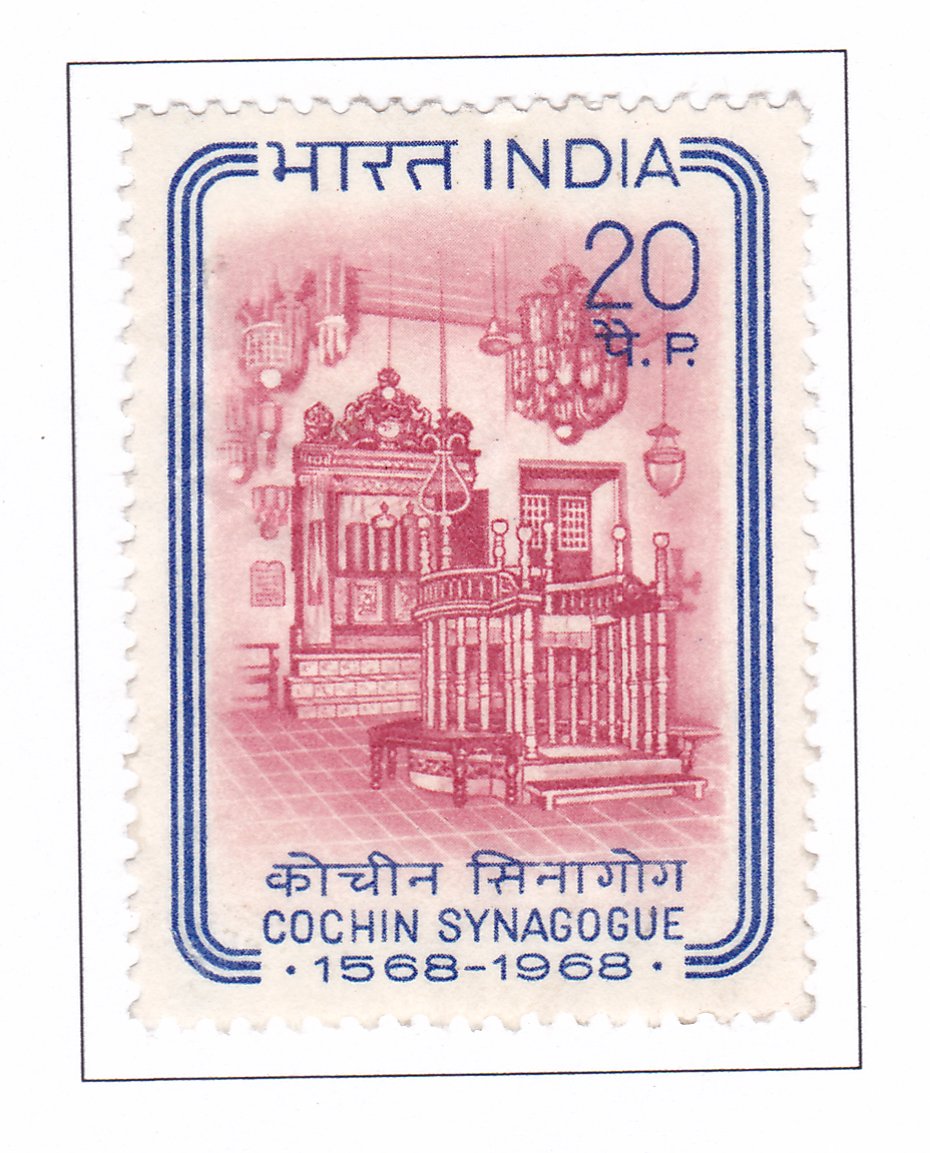Cochin Synagogue Quarter Centenary

Technical Data
| Date of Issue | December 15, 1968 |
|---|---|
| Denomination | 20 nP |
| Quantity | 3,000,000 |
| Perforation | comb 13 |
| Printer | Security Printing Press, Nashik |
| Watermark | No Watermark |
| Colors | Blue | Carmine |
| Catalog Codes |
Michel IN 462 Stamp Number IN 478 Yvert et Tellier IN 261 Stanley Gibbons IN 576 |
| Themes | Anniversaries and Jubilees | Buildings | Religion | Synagogues |
The Cochin Synagogue, marking its quarter centenary, stands as a testament to the rich tapestry of foreign influences that have contributed to India’s cultural heritage. Throughout its history, India has welcomed people from diverse backgrounds, enriching its society with their presence.
The arrival of the Jews in Kerala is believed to have occurred after the destruction of the Second Temple in Jerusalem in 72 A.D. This suggests the existence of a long-standing maritime connection between India and the Mediterranean regions, with Ionian and Roman ships making regular visits to Indian ports.
The Jews settled in Kerala, with the first historical mention of their presence appearing in the famous Jewish copper plates, which document a gift of a village from a local ruler to the settlers around 100 A.D. Until the 15th century, the Jewish settlement near Cranganore prospered, attracting periodic visits from Jews abroad. However, the arrival of other forces such as the Moors and the Portuguese in the 16th century led to the destruction of this settlement.
Seeking refuge, the Jews found sanctuary in Cochin, where the Hindu ruler granted them a site for habitation. In 1567, the Jew Town was established, followed by the construction of the Cochin Synagogue the next year.
The peaceful asylum provided to the persecuted Jewish community in India reflects the secular character of the nation, where all communities can thrive regardless of color, creed, or race. In celebration of the four-hundredth anniversary of the Cochin Synagogue, the P & T Department is honored to issue a commemorative postage stamp, recognizing the enduring legacy of religious harmony and cultural diversity in India.
